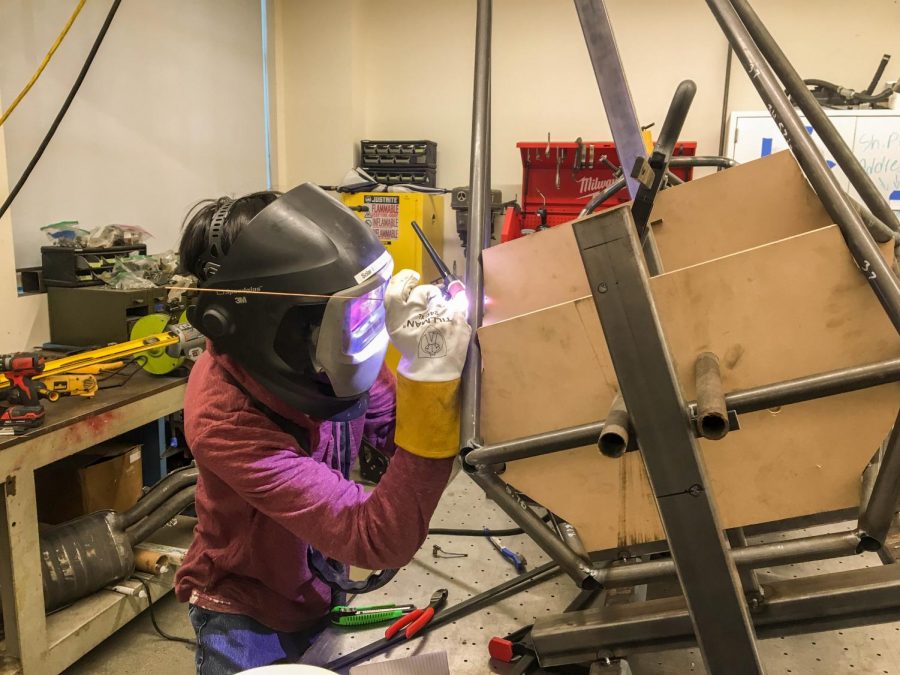A car that accelerates from 0 to 60 mph in 3.2 seconds and a driver seat that is only few inches above the asphalt — it may not be the latest Ferrari, but it is the newest project engineered by the Aztec Racing Club at San Diego State University.
The Aztec Racing club is a nonprofit and student-run organization that has existed at SDSU since 1994. According to its website, the cars are built in less than one year and are taken to the annual Formula SAE — Society of Automotive Engineers — event in Lincoln, Nebraska where 80 race cars from colleges and universities from around the world enter in a competition that focuses on student-designed and -manufactured open wheel race cars.
According to the club’s president, economics senior Cam Dean, every member of the team gains exceptional knowledge and experience by working on this project because almost every component of the car is designed and built by students, excluding the engine, which is built by Yamaha.
“You can encompass skills like welding and fabrication with an engineering education and really get that full package of (a) new employee,” Dean said. “I am proud to say that us and the rocket project spit out some of the most prepared students in all of our majors just because there is so much hands-on experience and separation in the curriculum.”
The chassis of the car and its aerodynamic components are all student-designed. The current model weighs about 500 pounds and has an engine that delivers 120 horsepower.
Dean said this year’s project is being made possible through private funds raised from a GoFundMe page.
“This year we didn’t get any funding from the school, so we had to fully fund this project out of our own fundraising and donations. While other big teams backed by big corporations, get a black credit card and they can pretty much do whatever they want,” Dean said. “We are really frustrated that the school decided to give us this nice facility and then they pretty much bought a brand-new car and decided to put no fuel in it.”
Last year, the team received over $50,000 in funding from the Student Success Fee.
Theresa Garcia, assistant dean for student affairs of the College of Engineering, explained how student-run organizations can submit proposals for Student Success Fee funding each year during the fall semester to student-selected committees, who then choose which proposals receive funds.
Students whose proposals are selected are notified at the end of the semester, allowing them to work on their projects during the spring.
Garcia said that funding is not always guaranteed, but it is a fair process that chooses different projects every year.
“This year, it simply did not work out,” Garcia said. “As troublesome as it was, it is the same system that awarded us in the first four years a large piece of the fundings available. This is a democratic process.”
Despite not being chosen this year to receive Student Success Fee money, electrical engineer junior Marc Absen said the team is still working hard on the project.
“I think we are definitely kind of a family” Absen said. “Most of us are here every day and you can always find someone here working on something. When it comes to crunch time there is always someone working on it.”
The ability to work on such a unique project gives its members a chance to have a well-rounded experience regarding any aspect of the production of the car, according to aerospace engineer sophomore Bryan Chaiyasane.
“It helps learning about the process of designing things how to make something, what to make it out of, how to model it,” Chaiyasane said. “It pretty much covers all the bases of engineering.”










